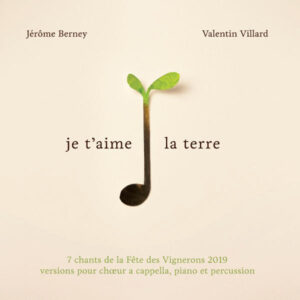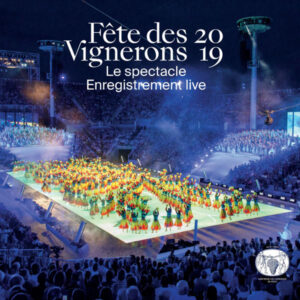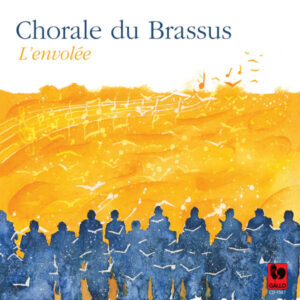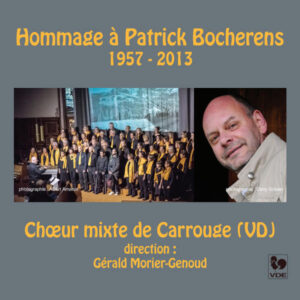Extraits / Excerpts
Tribute to Carlo Boller, recorded live during the concert on May 16, 1971, at the Salle du Pavillon in Montreux
Traditional: Ouverture – Carlo BOLLER / Maurice BUDRY: Chant du drapeau – La chanson du dimanche – Carlo BOLLER / Fernand RUFFIEUX: La Ronde du printemps – Carlo BOLLER / Maurice BUDRY: La vigne de printemps – Le Berceau du printemps – Carlo BOLLER / Robert JAQUET: Par un beau jour de mai – Traditional: A la claire fontaine (Arr. by. Carlo Boller) – Carlo BOLLER / Fernand RUFFIEUX: Nostalgie – Les armaillis du Pays bas – Carlo BOLLER / Robert JAQUET: Les faneuses – Carlo BOLLER / Maurice BUDRY: Hymne à la patrie – Traditional: Agonie (Still Away) [Arr. By. Carlo Boller] – Terre promise (Deep River) [Arr. By. Carlo Boller] – Carlo BOLLER / Traditional: Christus Vincit – Traditional: Le Petit Gars (Arr. By. Carlo Boller) – L’amour de moy (Arr. By. Carlo Boller) – De quoi nourrit-on les femmes (Arr. By. Carlo Boller) – Carlo BOLLER / Louis GRIVEL: Sylvie – Carlo BOLLER: Addio mia bella – Carlo BOLLER / Maurice BUDRY: Bon voyage, vin de ma vigne – Le vigneron monte à sa vigne
La Lyre de Montreux, Henri-Robert Ruchet, Conductor
Chœur des Alpes de Montreux, Olivier Nusslé Conductor
Petit Chœur du Collège de Montreux, Michel Hostettler, Conductor
La Montreusienne, Olivier Nusslé, Conductor
La Chanson de Montreux, Danielle Dubois, Conductor
L’Orphéon de Neuchâtel, Francis Perret, Conductor
Chœur Mixte de Bulle, Paul-André Gaillard, Conductor
Chœur d’Hommes Francis Perret, Francis Perret, Conductor
Chœur Mixte Paul-André Gaillard, Paul-André Gaillard, Conductor
Chœur d’Hommes Olivier Nusslé, Olivier Nusslé, Conductor
Chœur d’Hommes de Glion, Baptiste Bortolotta, Conductor
Son of Jean-Henri Boller and Rose-Marie née Grande of Italian origin, Carlo Boller was born in Menton, on the French Riviera, on May 4, 1896. His father worked as a tailor-cutter and spent most of his professional life between Menton in the winter and Montreux in the summer. The Bollers originated from Pfäffikon in the Oberland region of the canton of Zurich, where a family by this name was already mentioned in 1423.
From a very young age, Carlo studied violin with Ladislas Gorki, a virtuoso of Polish origin who gave him the nickname Carlo. Later, he came under the patronage of Abbé Bernard Kolly, a friend of the arts and companion of Abbé Joseph Bovet. At the age of sixteen, he performed as a soloist in Montreux with the Kursaal orchestra, and on August 8, 1920, he played a Bach chaconne during the inauguration of the organ at the parish church of Le Châtelard, where Bovet’s Dismas was premiered. He also gave a recital with pianist Clara Haskil in Neuchâtel in 1922 and collaborated with the Ribaupierre Quartet, consisting initially (1917–1924) of André and Émile de Ribaupierre (violins), Carlo Boller (viola), and Jean Décosterd (cello). He went to Paris to continue his studies but had to abandon his career as a violinist after developing a cramp in the little finger of his left hand (commonly known as “violinist’s cramp” and now identified as focal dystonia).
In 1927, with the help of Gustave Daumas, Marc de Ranse, and Paul Doncœur, he published the first version of the popular songbook Roland.
He then found a new direction at the Schola Cantorum in Paris, where he came under the influence of Vincent d’Indy. He persevered in music, becoming a conductor (winning first prize in 1928 and earning his diploma in 1932) with a growing interest in folk songs. In 1926, still in Paris, he met his future wife, Erminia Martini, a student from Cremona, with whom he had five children: Jean-Marie, Françoise, Marie-Noëlle, Rose-Marie, and François. Their marriage was celebrated in Châtel-Saint-Denis on December 29, 1928.
Upon returning to Switzerland, he settled in Vevey, where he conducted several choirs and groups from the Vaud and Fribourg regions. He succeeded Abbé Léon Sesti as conductor of the women’s choir in Nyon, “Les Chanteuses de la Colombière,” which he led until after World War II and with which he recorded his first discs. That same year, the “Groupe choral de Gruyères” invited him to take over its direction, as did the Vocal Quartet of the Scouts of Châtel-Saint-Denis. From 1933 to 1939, he conducted the “Mixed Choir of the Teaching Corps of Vevey-Montreux,” where his pedagogical skills were highly appreciated. From 1932 to 1952, he directed the “Union Chorale of La Tour-de-Peilz.” In 1935, he moved to the Villa Sainte-Claire in Montreux. From 1934 to 1952, Boller conducted the “Mixed Choir of Bulle,” which he imbued with his tireless work ethic and personal charisma. With this ensemble, sometimes joined by the City Orchestra of Bulle, he premiered the Pastorale Gruérienne. With the Bulle choir, he also presented several classical works by Bach, Haydn, and Gluck, including Orfeo ed Euridice. In 1935, he succeeded Alexandre Dénéréaz as conductor of the “Men’s Choir of Lausanne.” In 1936, he took over the “Chœur des Alpes” in Montreux. In 1937, he founded the “Chanson Vaudoise,” which often performed abroad. In 1939, he founded the remarkable “Chanson de Montreux,” a group that quickly gained fame in Switzerland and internationally. That same year, Boller brought together a large choir for the National Exhibition in Zurich.
From 1942 to 1952, Boller became associated with the city of Neuchâtel, conducting the men’s choir “L’Orphéon” and forming a small children’s choir in Corcelles (NE) for which he composed the delightful Petit Chaperon Rouge. In the canton of Valais, he directed the “Petit Chœur des Mayens de Sion.” In 1951, Boller united the “Mixed Choir of Bulle” and the “Union Chorale of La Tour-de-Peilz” to stage Vincent d’Indy’s Le Chant de la Cloche, which he conducted in Menton with the Nice-Côte d’Azur Orchestra. This memorable concert marked the centenary of d’Indy’s birth. Boller also prepared choirs for Arthur Honegger’s Saint François d’Assise (1949) and Darius Milhaud’s Barba Garibo (1949–1950).
- Categories
- Composers
- Interprets
- Booklet
- Bortolotta Baptiste
- Chœur d'Hommes de Glion
- Chœur des Alpes de Montreux
- Chœur Mixte de Bulle
- Dubois Danielle
- Gaillard Paul-André
- Hostettler Michel
- L'Orphéon de Neuchâtel
- La Chanson de Montreux
- La Lyre de Montreux
- La Montreusienne
- Nusslé Olivier
- Perret Francis
- Petit Chœur du Collège de Montreux
- Ruchet Henri-Robert












